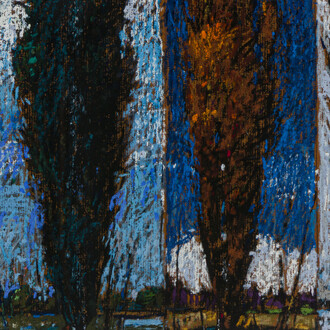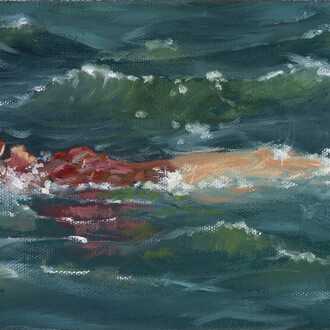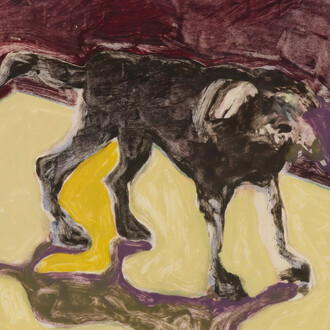Fritz Scholder (1937–2005) created art that shattered conventional norms in redefining the representation of “The American Indian” in American art, radically departing from traditional, stereotypical depictions of the mythic Indian. One of the notable aspects of Scholder’s artistic legacy is the importance of his works on paper. An exhibition of Scholder’s acrylics on paper, lithographs, and monotypes, entitled Fritz Scholder: On Paper, goes on exhibit.
While Scholder worked in various mediums, most notably in oil on canvas, acrylic on canvas, and bronze sculpture, his works on paper showcase an especially unique facet of his creativity. His drawings and prints often feature bold, expressive lines, vibrant colors, and powerful imagery. The intimacy and immediacy of works on paper reflect his ability to explore his ideas more freely and experiment with different techniques.
The lithographs have become an important part of the work. As a painter-printmaker and fetish maker, I revel in being able to produce statements in various forms. In today’s world, love, art, and magic are greatly needed.
(Fritz Scholder)
Known for his evocative distortions, robust brushwork, and vivid, dissonant color, Scholder’s works on paper allowed him to convey a sense of spontaneity and raw emotion, capturing the essence of his artistic exploration. These works on paper are significant not only for their artistic merit but also for the insight they provide into Scholder’s thought processes and the evolution of his artistic style.
Although born one-quarter Luiseño, a California Mission tribe, Scholder said he grew up "non-Indian." Born in Breckenridge, Minnesota, Scholder spent his childhood across the Midwest, where he developed a passion for drawing and painting. When the family settled in Sacramento in the late 1950s, Scholder studied at Sacramento City College with the celebrated Bay Area artist Wayne Thiebaud, who exposed him to the Pop art movement and arranged his first solo exhibition.
At a time when Native American art was dominated by romantic portrayals of the stoic and invariably head-dressed Indian Brave and Chief, Scholder imagined the Native American subjects of his paintings more realistically for the contemporary times with cigarettes, beer cans, and dark glasses, in pickup trucks and blue jeans. In turns elegant and radical, Scholder explored Native American identity with poignancy and bravery. His palette of lime greens, blazing oranges, and moody blues masterfully evokes quintessentially American feelings of discovery and rebirth.
Scholder’s career took flight in the mid-1960s while teaching at Santa Fe’s Institute of American Indian Arts. In 2008, the Smithsonian Institution’s National Museum of the American Indian mounted posthumously an unprecedented dual-city career retrospective in both New York City and Washington, DC. His work is the subject of numerous publications and is included in the collections of more than 120 museums in the United States, including the National Museum of American Art in Washington, the Museum of Modern Art in New York, and the Metropolitan Museum of Art in New York.















